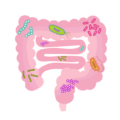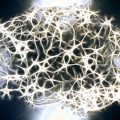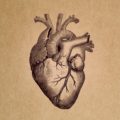Origins of the Modern Medical Model
Probably few people are aware that the present method of medical practice was formulated by the Flexner report of 1910. John D. Rockefeller, the oil magnate, had set his sights on gaining a monopoly in the drug and pharmaceutical industry. To do this he had to get rid of the competition. This consisted of natural healing modalities that included naturopathy, homeopathy, and holistic medicine, all of which were flourishing in many parts of the country. Rockefeller paid Abraham Flexner to visit all the medical schools in the United States and the information was released in the Flexner report, calling for a standardization of medical education. It ultimately led Congress to declare that the American Medical Association was the only body with the right to grant medical school licenses. It compelled the government to destroy the natural competition by regulating medical schools.
Flexner had visited Germany and their method of medical practice was adopted for the United States. This formulated the idea that the laboratory would be specific enough to prove the diagnosis and gave rise to the concept of scientific medicine. This has become such a vital part of modern medical practice that failure to find laboratory evidence in a common appearance of polysymptomatic patients has usually come to indicate that there is really no disease. The patient is often told that “it is all in your head”. Unfortunately, it appears to assume that all the right tests have been applied. Furthermore, diagnosis of a particular organic disease depends on the constellation of the currently acceptable abnormal laboratory tests associated with that disease. Each disease is regarded as a separate entity whose specific cure must be found by detailed research. The Flexner report was so offensive to William Osler, Professor of Medicine at Johns Hopkins School of Medicine that he immigrated to England. He became Regius Professor of Medicine at Radcliffe Infirmary in Oxford and was knighted. His philosophy emphasized the clinical aspects of the patient’s symptoms and his leadership led to the bedside teaching model of British medical schools.
Using the present model, medical education requires the student to understand the complexities of each of the many diseases envisioned. Even worse, he is expected to remember constellations of symptoms and associated lab data called “syndromes”, many of which are named after the individual who first described it. The next stage of education after graduation is as a hospital resident where the concept of specialization is encouraged and the present medical model is reinforced. It also discourages an entry into primary care, often seen as a failure to ascend the ladder of specialization. It has given rise to the disproportion of primary care compared with specialists and has created a state where the emergency room has virtually taken the place of the family doctor.
Where We Are Now
The published statistics are worrying. A typical visit to a doctor consumes an average of 121 minutes of the patient’s time. This includes 37 minutes in travel and 64 minutes waiting for care. The average time spent with a physician is 20 minutes at most and the national average for visits to doctors is around four times a year. For a young person to contemplate going into medicine, the path to being a doctor takes a minimum of 12 years after graduating from high school. Not only is the process challenging academically, it requires perseverance to complete such a long course of training. Some specialties can take five or more additional years of training. In addition, the financial debt is often overwhelming. Of the nearly 956 million visits that Americans made to office-based physicians in 2008, 51.3% were to primary care practitioners.
The Current Medical Model Breeds Diagnostic Uncertainty
Researchers at Johns Hopkins University School of Medicine have explored the frequency of diagnostic uncertainty by providers. They reported that 52% of physicians and 64% of nurse practitioners/physicians assistants admitted that they made a mistake daily. Responders included 633 physicians and 118 nurse practitioner/PAs. Previously published data had stated that 10-15% of all patient encounters included diagnostic uncertainty. In the light of these facts, what can a graduate from medical school expect? If he/she becomes a primary care physician and the allotted time with a patient is only 20 minutes, what can be accomplished? If a clinical problem appears to be complex, referral to a specialist is a way out of the dilemma. Thus, if a patient has been referred to a neurologist and asks a question concerning intestinal symptoms, the neurologist states that that is a question for a gastroenterologist, resulting in further referral. With the common incidence of complex problems, the time constraints have also been imposed on the specialists. Furthermore, postgraduate education, apart from an occasional conference, is from the pharmaceutical representatives, each explaining the “miraculous” effects of the latest drug. Before I came to the United States, I was in a family medical practice in a small country town in England. I can still remember that when a representative had called on the practices within the town, the local drugstores registered a large number of prescriptions of the particular medication whose clinical benefits had been presented to the physicians.
It is hardly surprising that, after a rigorous training, a young physician who chooses primary care as his life work would tend to become bored from the daily appearance of what seems to be regarded as so many patients with “imaginary” symptoms. Perhaps after recuperating financially, specialization may seem to be an acceptable escape, thus adding to the disproportionate number of specialists to primary care physicians. Perhaps these facts are responsible for the waning interest in being a physician. Add to them the appearance of bureaucratic interference and the intricacies of electronic recording constraints, the profession of medicine seems to be less attractive than other professions. A recent report from the Association of American Medical Colleges projected a shortage of 42,600 to 121,300 physicians by 2030.
Is There a Solution?
Dr. Marrs and I believe that there is indeed a solution. We believe that the present medical model is a catastrophe and needs to be replaced. Evidence is rapidly accumulating that the core issue of disease is defective energy metabolism as defined by Selye 50 years ago. Although nutritional deficiency is by far and away the commonest way of producing energy deficiency, we now know that there are abnormal genetic influences, many of which can be resolved by epigenetic (use of nutritional elements) treatment. There are already professional organizations of holistic physicians. In 1982 I joined a medical group that came to be named as the American College for Advancement in Medicine (ACAM) and later became a member of the International College of Integrative Medicine (ICIM). Both of these organizations need to be encouraged since they are resuscitating the medical approaches that were canceled as a result of the Flexner report. Holistic medicine recognizes that healing requires cellular energy and that this can only be accomplished by attention to pristine nutrition and an epigenetic approach. It is interesting that the word “holistic” comes from an ancient word “holos”, meaning “the side of a hill where the ancients gathered herbs”.
A New Model of Medicine: Let Energy Be the Guide
In previous posts on this website we have outlined the skeleton of a new medical model by the triple influence of genetics, nutrition and stress (as defined by Selye). Even genetically determined diseases often require some form of stress to become clinically expressed. For example, diabetes has one or more genetic markers. If the genetic influence were the sole factor, one would expect the disease to be expressed at birth. However, the history of diabetes indicates that its onset is many years later and its onset is often associated with minor stress such as a cold. All diabetics are aware of the effect of nutrition. The DNA of an individual is seldom perfect but the imperfections may not be severe enough to cause functional breakdown if cellular energy is adequate to meet the stresses of life. The revised model hypothesizes that energy deficiency is the core issue of disease, thus emphasizing the wisdom of Hippocrates who, in 400 BCE, said “let medicine be your food and food be your medicine”. Our advice to a newly graduated physician would be that he upgrade the biochemical knowledge that he has acquired in medical school, with a particular emphasis on energy metabolism.
As a primary care physician, or even as a specialist, he would be most interested in the family history for indications of genetic risk. A review of the patient’s diet, including that associated with social activities, would be his next interest and he would ask a few questions to ascertain whether any form of stress added to the equation. Yes, an infection is an attack on the patient’s constitution and may be the primary problem, but body defenses require energy. With inadequate essential elements supplied by nutrition, the defense mechanisms gradually deteriorate. Their resuscitation requires megadoses of the defense supporting nutrients (vitamins and minerals).
Laboratory tests would concentrate on depicting the energy status of the patient. He would quickly appreciate that the so-called “imaginary” symptoms expressed by the patient are those of poorly energized brain cells registering their dysfunction. That is why we have hypothesized that beriberi, the classical energy deficiency disease is “the great imitator”. For example, some years ago young woman consulted me with the disease called thrombocytopenic purpura. This disease is caused by a deficit of cells that circulate in the blood, called platelets and they have an important part to play in the control of blood coagulation. The body becomes covered with tiny plebs of non-coagulated blood and a blood test shows that the platelets are deficient. She had suffered from this disease for many years, receiving conventional treatment without success. Applying the principle that there was an energy deficit in the bone marrow where platelets are produced, I treated her with a series of intravenously given vitamins with complete remission of the disease. This means that the three circles of health, genetics, nutrition and stress, if fully understood in principle, would present a simplification in the ability of a physician, or other health professional to approach a new patient. It would provide a simple “mind picture” for constructing the necessary questions to be asked after the reason for the consultation has been addressed.
We Need Your Help
More people than ever are reading Hormones Matter, a testament to the need for independent voices in health and medicine. We are not funded and accept limited advertising. Unlike many health sites, we don’t force you to purchase a subscription. We believe health information should be open to all. If you read Hormones Matter, like it, please help support it. Contribute now.
Yes, I would like to support Hormones Matter.
This article was published originally on September 30, 2019.







































